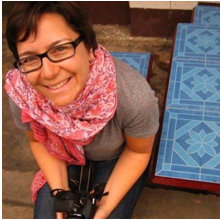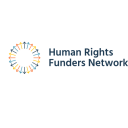In the world of philanthropy, it’s easy to get a meeting but hard to get the unvarnished truth.
For this reason, my favorite moments in my decade as a grantmaker were when the walls came down—when I found myself having honest exchanges with grantees who didn’t see eye-to-eye with our funding strategy or who made themselves vulnerable by sharing an uncomfortable reality.

Jenna Capeci
Like when the director of a prospective grantee sheepishly explained that the number of staff in the budget wasn’t exactlyaccurate: a current donor had set a limit for the number of staff they felt the project warranted so the organization used a workaround to share the budgeted salaries with ‘hidden’ staff. Or when a Thai HIV/AIDS activist gestured with frustration at a wall stacked with boxes of donated condoms and asked ‘Do our donors who won’t fund staff salaries think that these are magic condoms that fly off the shelves by themselves?’
I learned a lot through these often invigorating, sometimes uncomfortable conversations. This is what drew me to IHRFG: the desire to spark difficult and frank conversations and to establish new venues for our diverse membership—and the human rights activists who are on the frontlines—to have critical conversations.
In that spirit, here are four realities that are shaping IHRFG’s work:
Size—and power dynamics—shouldn’t get in the way of honest conversations. Having worked at a public charity for over a decade, I know that all is not equal in the philanthropic sector. Larger budgets can translate to greater influence; however, it’s the diversity of perspectives and the presence of smaller funders who punch above their weight that makes networks like IHRFG robust and enables our members to identify and tap into their comparative advantages.
IHRFG was founded over 20 years ago by large, private foundations but today about 40 percent of our members come from public foundations, including community foundations and women’s funds. As the field of philanthropy evolves and grows, we are experimenting with new ways to retain the intimacy that promotes open exchange. Funders in the IHRFG community may not agree on approaches (and may ultimately place different bets) but the space and courage to interrogate different theories of change is needed to fortify our field.
We network and convene to build accountability and learning—not for navel gazing. At their best, donor networks inspire transparency, openness and collaboration; at their worst, they draw resources from the field and the time required for coordination becomes a drag. Keeping this delicate balance in mind, IHRFG aims to bring funders together for collective learning activities that develop new culture or practice. For example, at a recent Responsible Data Forum hosted by IHRFG and the Engine Room, human rights funders came together to examine their role in protecting grantee security and to identify best practices for handling sensitive information and for supporting responsible data culture in their institutions and amongst their grantees. IHRFG is also increasingly connecting with other funder networks around the world—to see if we’re having the same conversations and can join forces, or to find inspiration and new perspectives.
Social change grantmaking requires a willingness to get off the main roads. Growing up in New York, my brothers and I used to cheer when my dad decided he was going to ‘take the streets!’ He’d pull out of the slow-moving traffic of the highway and onto the back roads. The way he navigated Brooklyn’s maze of streets never failed to impress me. In an era of shrinking democratic and civic space, human rights funders are calling on each other to find new avenues to support human rights movements. Through the Funders Initiative for Civil Society, IHRFG members are leading the way in identifying the forces behind closing civic space and developing creative shared strategies in response, such as building bridges with the development, humanitarian and business sectors, supporting cutting-edge narrative work and investing in broader constituencies and grassroots organizing for human rights and social justice.
It’s time to embrace the global nature of the human rights grantmaking community. Grantmakers who are based in the Global South and East and funding locally can offer perspectives that enhance the broader field. For example, I’ve found local funders to be deeply engaged in social movements and serving as important allies during times of threat. One former colleague even built relationships with local prison guards to help prepare for a likely crackdown on her grantees.
In 2013, grantmakers in the Global South and East dedicated the largest proportion of their grantmaking to support capacity-building and coalition-building, providing two and three times more funding for these strategies, respectively, than the broader community.[1] Drawing specifically on these areas of expertise and experience will help us expand our knowledge base. With a membership that spans 49 countries, IHRFG is well-placed to make these connections.
When money is on the line, creating genuinely open spaces for dialogue and debate is challenging but ultimately essential to being effective grantmakers. As we build our community let’s keep diverse perspectives, honest conversation and critical reflection at the center.
How can IHRFG help you strengthen your grantmaking practice? Come find me at our New York conference next week to discuss!
Jenna Capeci is deputy director for the International Human Rights Funders Group (IHRFG).
For more information about IHRFG, visit http://www.ihrfg.org or contact Jenna at jcapeci@ihrfg.org.
This post originally appeared on IHRFG’s blog. The original article can be found here>






Comments (0)